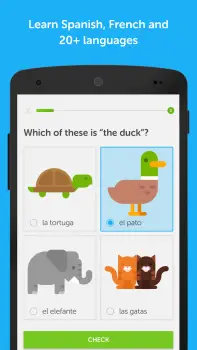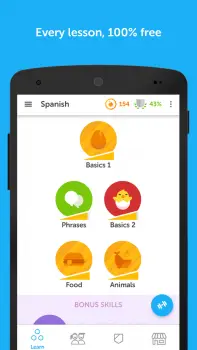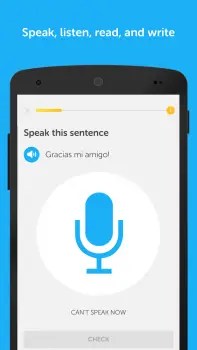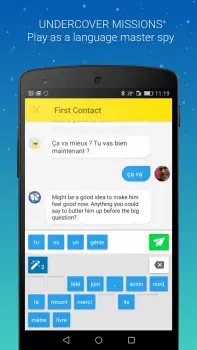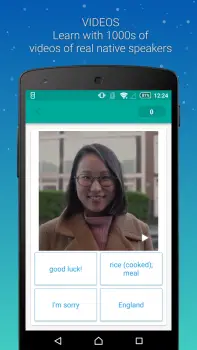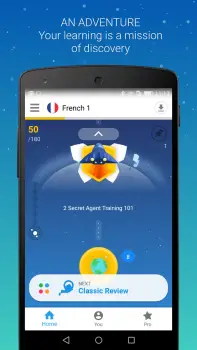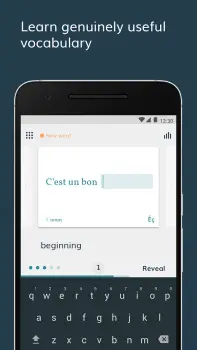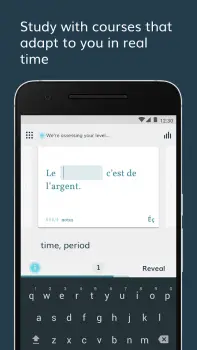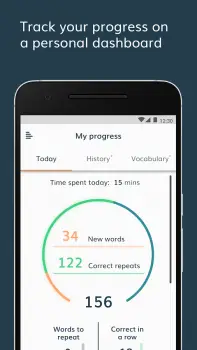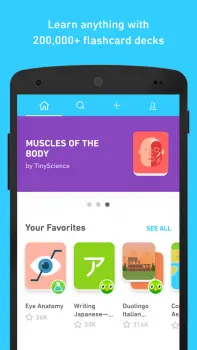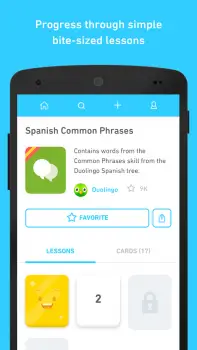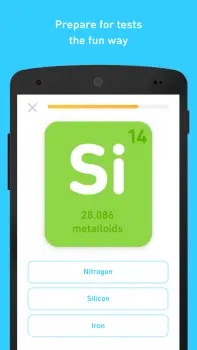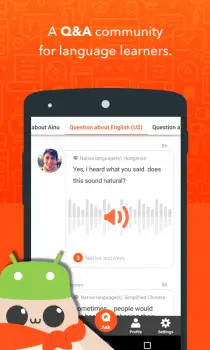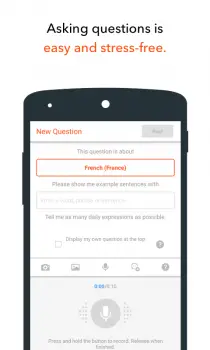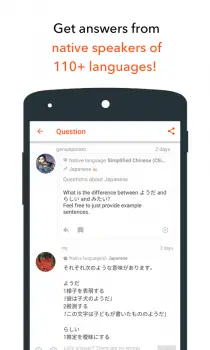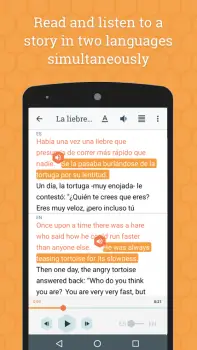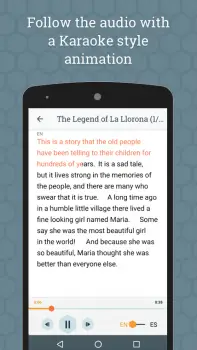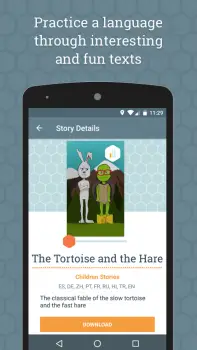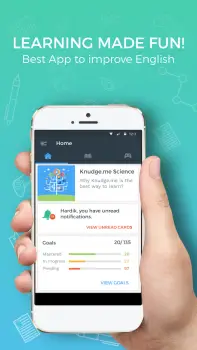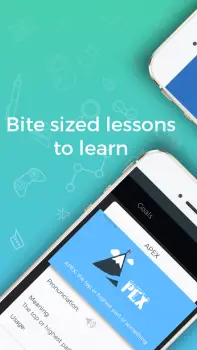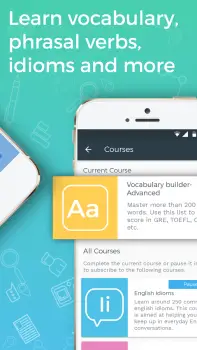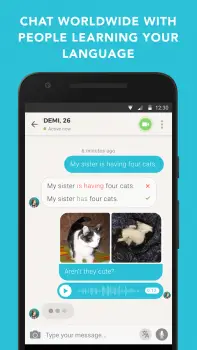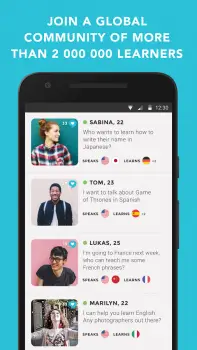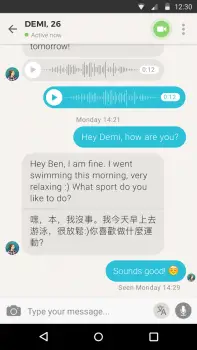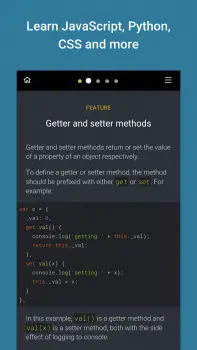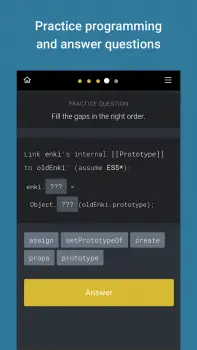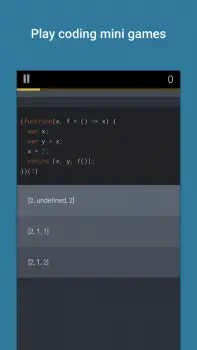If you want to brush up on learning a new language, the phone in your pocket is a good place to start. Best of all, most of these learning resources are free and can actually help you become more fluent in the language of your choice. There are a handful of different approaches to learning a new language and finding the right way for you means you’ll retain more of what you want to learn.
Here’s a handful of the language learning apps available on Android to help you get started on your journey to becoming multilingual.
1. Duo Lingo
Best For: 100% free language learning app for 20+ languages
Price: Free
In-App Purchases: Yes, but they’re completely optional
Duo Lingo is the best app on the Google Play Store for learning 20+ languages 100% free. There are a few in-app purchases, but they’re completely optional ways to pay real money in order to “cheat” your streak back if you miss a day.
Duo Lingo starts you off with the basics of any language by mixing spoken words, flash cards, and pictures to help you associate new words with their concepts. As you move up the lesson plan into the more advanced sections of a language, you’ll be asked to translate a news paragraph or article based on your best ability with that language.
Overall, it’s one of the most effective tools for learning a language and the competitive aspect of it makes it so you can enjoy learning an entirely different language than your friend but you can compare your progress.
2. Memrise
Best For: Learning via video of native speakers
Price: Free*
In-App Purchases: Yes, monthly subscription
Memrise offers fewer languages to learn than Duo Lingo, but it turns learning a new language into a game that can be followed. When you first start, you’ll see short snippets of native speakers saying the words your learning. As you progress, you will eventually start writing online chats in the language of your choice with bots to help you learn.
Memrise is free to use, but it does offer a subscription feature that makes it easier to progress through the levels of learning. Free members are limited in the amount of content they can do in a day, while PRO members have no such limitations.
3. Lingvist
Best For: Learning new vocabulary with no frills
Price: Free
In-App Purchases: No
Lingvist takes a no-frills approach to learning French, Spanish, German or Russian for native English speakers. It doesn’t gamify the process like Duo Lingo and Memrise; instead, it presents you with new flash cards and concepts each day and has you repeat them as you learn.
The app keeps a vocabulary of all the words you’ve learned and as you progress, you’ll be taught increasingly harder concepts as you progress. The app decides when you present you with new words in your chosen language based on the most commonly used words in everyday conversations and business situations.
The founder who created the app wanted to learn French but found traditional means to be too boring, so he decided to approach the problem like a mathematical equation. Thus, Lingvist was born.
4. Tinycards
Best For: Learning language by flashcards
Price: Free
In-App Purchases: No
Tinycards is an extension of Duo Lingo that can be used to learn a lot more than just languages. The app lets you build your own flash decks for your school projects or you can choose from over 200,000 community contributed flash decks for keeping your memory sharp.
Some of these are language oriented since Duo Lingo itself is language oriented, so if you prefer learning through flash cards you might want to start with Tinycards before progressing on to Duo Lingo for more advanced concepts.
5. HiNative
Best For: Asking questions of native speakers
Price: Free
In-App Purchases: Yes, for priority answers to your questions
HiNative takes a different approach to learning languages by putting you in contact with native speakers of the language and allowing you to ask questions about anything! The app lets you see questions and answers for free, but it does have an in-app purchase for their Premium mode. This mode gives priority to your questions and lets you bookmark your answers so you can reference them again.
6. Beelinguapp
Best For: Learning through reading audio books
Price: Free
In-App Purchases: Yes, to remove ads and buy stories
If you’re the type of person who learns better by reading, then Beelinguapp might be just the thing for you. Instead of presenting you with flash cards and words to learn in basic increments; instead, the app presents stories in two languages that you can read and follow along with karaoke style.
The app has a few stories available for free, but most require an in-app purchase of $0.99 to buy. While it’s not entirely free to use, I found Beelinguapp to be a pretty novel way to see how languages differ in their syntax.
7. Knudge.me
Best For: Brushing up on your English
Price: Free
In-App Purchases: No
If you’re not a native English speaker and you find yourself getting confused by common English Idioms, then Knudge.me aims to fix that. It’s a learning app for someone who already speaks English but wants to bone up on some of the more common idioms that every day English speakers use. It also features practice for homophones and homonyms, which can be some of the more frustrating parts of English to master.
8. Tandem
Best For: Practicing with native speakers
Price: Free
In-App Purchases: No, but contains advertising
One of the best ways to learn a language is by speaking directly with native speakers. Tandem has a community of over 2 million members who want to practice another language on other native speakers. It provides a pretty great interface for doing so, with the standard messaging chat that includes the ability to send audio and video messages.
Out of all the apps on this list, Tandem supports the most languages since it matches up those who want to learn a language with someone else who wants to learn your language. The only downside is that it requires an invitation to get in immediately, otherwise you’ll have to put in your application and wait for an invite yourself.
9. Languages by Rosetta Stone
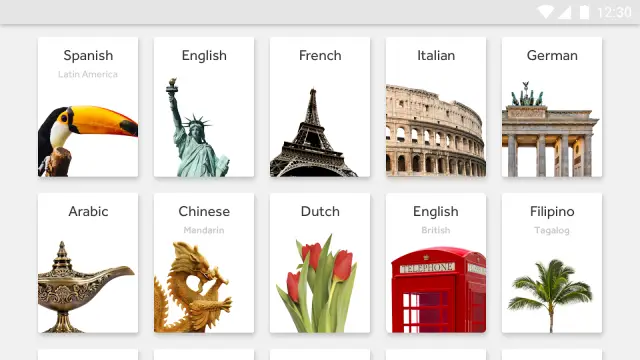
Best For: Those who want a familiar approach
Price: Up to $199
In-App Purchases: Yes
Before smartphones and tablets came along and captured the world’s attention with their portability, you had to sit down in front of a computer in order to learn things. Rosetta Stone software has been around for decades and has helped millions of people learn a second or even third language. It’s so far down on this list because in today’s modern age, Rosetta Stone’s pricing seems archaic.
If you’re familiar with Rosetta Stone and want to use their mobile options, by all means go ahead. However, with services like Duo Lingo and Memrise offering the ability to become fluent in a second language for much cheaper, it’s harder to recommend Rosetta Stone to anyone except the most die-hard use cases. But hey, they do have a mobile option!
10. Enki
Best For: Those who want to learn to write code
Price: Free
In-App Purchases: Yes for expanded lessons
Who said learning a language had to be about speaking? If you’re an amateur coder who is interested in learning languages like JavaScript, Python, CSS and more, then Enki is all you need. It works much like Duo Lingo to teach you the programming language of your choice. Enki will even test you on concepts you’ve learned by asking you to write your own code that performs a task.
Enki will teach you basic coding principles, but if you really want to progress with the app the PRO version requires a subscription.
Best of the Best
The Google Play Store has hundreds of thousands of apps to choose from. This list only scratches the surface. We’ve published numerous “Best Apps” lists for everything from dating to education. Check out the lists below to explore even more!


